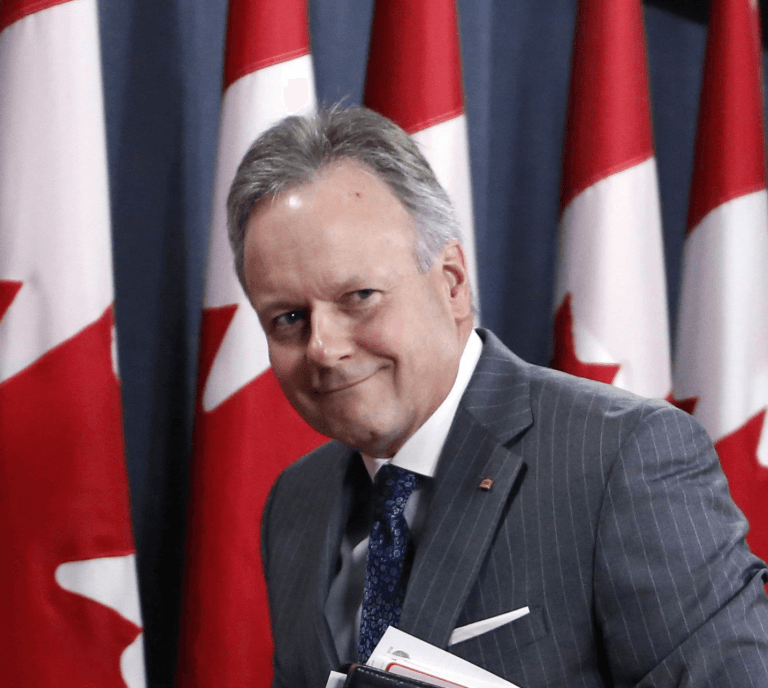Why a September interest rate hike makes sense
If the Bank of Canada’s decisions on rate increases are truly data dependent, Canadians should prepare for another this week

Share
How about another indicator that the era of ultra-low interest rates is nearing an end?
The federal government, which has access to better information than most of us, jumped into the bond market last week with an offer to sell $750 million of debt that will mature in December 2064 – 47 years from now.
If history is any guide, there will be any number of recessions, crises and the like over the decades ahead. That’s why it is normally expensive to borrow money for 50 years. Yet investors were willing to lend Canada hundreds of millions dollars at a ridiculously low rate of 2.2 percent. For an outfit as big as the federal government, which generates annual revenue of $300 billion, and has the sovereign authority to print currency whenever it wants, borrowing at those terms is like getting money for nothing.
Finance’s rush to market suggests its debt managers sensed money only will get more expensive from here. Finance Minister Bill Morneau said in his 2017 budget that he might issue more “ultra-long bonds” on a “tactical basis” this year. The timing was impeccable. The day after the federal government’s bond sale, Statistics Canada reported that gross domestic product surged to an annual rate of 4.5 percent in the second quarter, guaranteeing that the Bank of Canada will raise its benchmark interest rate at least once more before the end of the year.
There is a realistic chance the next increase could come Sept. 6, which would be sooner than anyone expected only a few weeks ago. When the central bank increased its benchmark interest rate by a quarter point in July, Governor Stephen Poloz said the next change would depend on incoming data. On that basis, the Bank of Canada will need an excellent explanation if it opts against raising interest rates this week. Policy makers had forecast growth of three percent in the second quarter, which means the economy is advancing at a rate that is 50 percent faster than they thought earlier this summer. If the reason to raise interest rates in July was to get ahead of inflation, then the latest data suggest the central bank will have to move faster than it expected.
Some on Bay Street are getting ready for a second consecutive interest-rate increase. Avery Shenfeld, chief economist at CIBC World Markets, had assumed the Bank of Canada would wait until October to raise interest rates again. He advised his clients last week that he now thinks the shift will happen in September. “Nudging interest rates a quarter point higher is clearly warranted after a scorching first half,” Shenfeld said. “We don’t need rates this low to generate decent growth, and can ameliorate future financial system risks by easing household credit demand.”
RELATED: After weathering the Great Recession, can Canada avoid a debt crisis?
Shenfeld is correct in his assessment, but probably wrong with this prediction. At 4.5 percent, the economy was growing a remarkable 3 percentage points faster than the Bank of Canada’s estimate of the non-inflationary growth rate. That means spare capacity is disappearing quickly.
There also is a strong argument for backing up the Bank of Canada’s warnings about household debt with some action. If the central bank is worried about causing a panic, it could make clear in its policy statement that it intends to leave interest rates unchanged for a period of time. Finally, raising interest rates in response to off-the-charts growth data would reinforce Poloz’s message that policy is being guided by the numbers.
Still, the safer bet is the Bank of Canada will find a way to explain why a growth rate of 4.5 percent represents no imminent threat to inflation, even though a slower rate was considered a risk less two months ago. There is a decent argument to be made, although it will require the central bank describing more clearly what it means when it says it is “data dependent.”
The July decision wasn’t especially well understood. They certainly appeared to misread it at the Prime Minister’s Office, as some of Justin Trudeau’s apparatchiks decided to talk to a reporter about their misgivings over how Poloz was running monetary policy. It should have been clear to everyone that the governor was in no great hurry to move borrowing costs higher. Poloz said he thought there was a chance that faster growth would cause companies to hire and invest, thus creating more productive capacity and boosting that non-inflationary speed limit. He said that appears to be what happened in the United States, where the Federal Reserve has been raising interest rates remarkably slowly, even though the unemployment rate is near record lows.
RELATED: Why inequality is troubling the world’s top economists
The Bank of Canada could be inclined to follow the Fed’s playbook. Janet Yellen, the Fed’s chairwoman, resisted early calls to raise interest rates by arguing that there is more to a healthy labour market than a low unemployment rate. She said elevated numbers of underemployed Americans and stagnant wage growth justified low interest rates for a longer period of time. The Bank of Canada made the same point in July. In its latest quarterly report on the economy, the central bank noted that “elevated levels of long-term unemployment and below-trend average hours worked” implied that there still was slack in the economy. If it leaves interest rates unchanged this week, that will be an important part of the justification.
But make no mistake, a decision to pause in September will be delaying the inevitable. One difference between the Fed’s experience and what the Bank of Canada is assessing now is that the U.S. economy never took off in the way that Canada’s has over the past year. A data-dependent central bank can only ignore the data for so long.